Gun owners have a responsibility to ensure that they are properly trained and educated in the safe operation of firearms. Firearms safety training provides gun owners with the knowledge and skills necessary to be responsible and safe when using guns.
This guide outlines why every gun owner should consider taking a gun safety course, the importance of continuous education, and how to find the right course for you.
What Is Gun Safety Training?
A firearms safety training course provides both novice and experienced gun owners with essential knowledge and skills related to firearms. This training covers a range of topics, from the basic firearm safety rules to the legal aspects of gun ownership and usage.
Basic Firearm Safety Rules
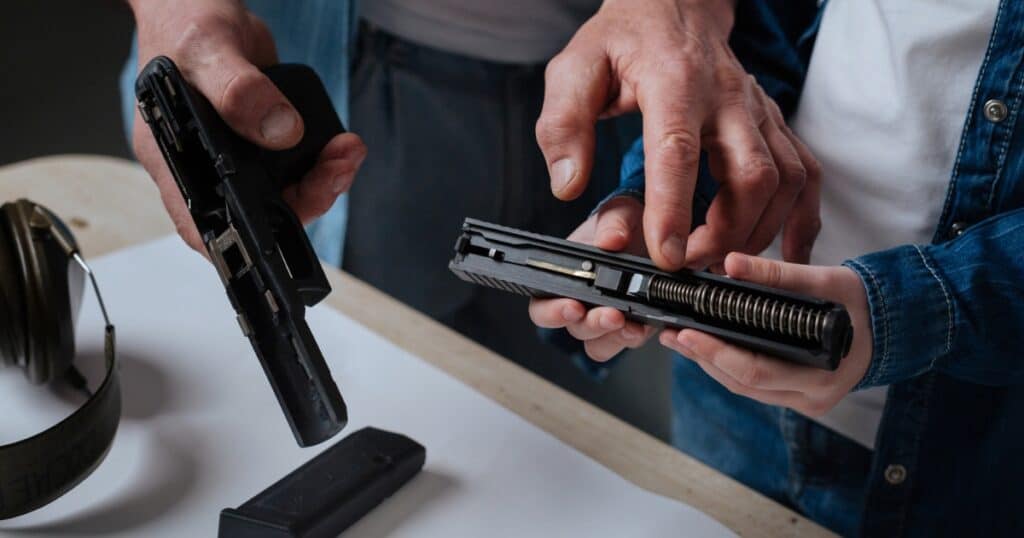
In any instructor-led gun safety training, the first lessons often revolve around the fundamental rules of firearm safety. These typically include:
- Treat every firearm as if it were loaded, even if you believe it’s not.
- Never point the gun at anything you do not intend to destroy. This rule highlights the need for absolute control over the firearm’s muzzle direction at all times.
- Keep your finger off the trigger until your sights are on the target and you have decided to shoot.
- Be sure of your target, as well as what’s behind and around it.
Gun Safety Training Modules
Gun safety training programs offer a variety of modules designed to cover all aspects of firearm use and safety. These include:
- Basic Gun Handling: This module educates participants about the correct way to load, unload, and handle different types of firearms.
- Maintenance and Cleaning: Participants are taught how to properly clean and maintain their guns to ensure their longevity and reliability.
- Shooting Skills: This module includes lessons on shooting stance, grip, sight alignment, trigger control, and breath control.
- Emergency Situations: Participants are taught how to react safely and effectively in emergency situations involving firearms.
- Legal Aspects: This covers the legal responsibilities of owning and using a firearm, including local, state, and federal laws.
After successfully completing the varied modules of a firearms safety training course, participants often receive a completion certificate. This not only serves as proof of their dedication and newly acquired knowledge but also can be crucial when buying firearms in some jurisdictions or joining shooting clubs that require proof of safety training.
Reasons Why Every Gun Owner Needs Gun Safety Training
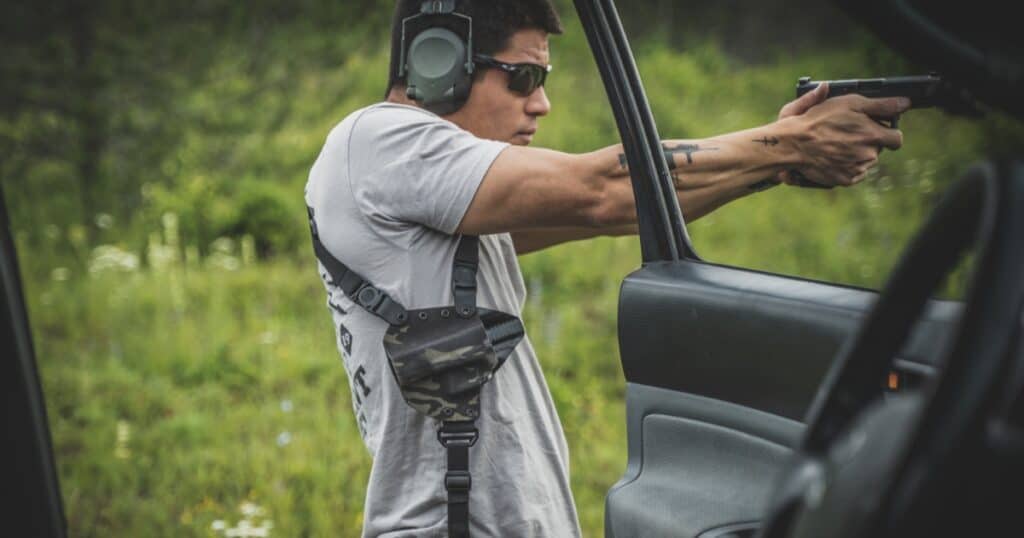
Regardless of the reasons for owning a firearm, all gun owners share one common responsibility: to handle their weapons safely. Here, we discuss some of the most compelling reasons why every gun owner, regardless of experience, needs gun safety training.
1. Promoting Responsibility and Safety
A primary component of gun safety training is teaching participants how to handle and store firearms responsibly. This knowledge drastically reduces the risk of accidental discharges and unauthorized access, thus enhancing household safety, particularly in homes with children.
Many firearm accidents occur due to a lack of understanding or negligence of basic gun safety rules. Training programs reinforce these fundamental safety principles, significantly reducing the likelihood of such mishaps.
2. Enhancing Skills and Confidence
Gun safety training often includes practical shooting exercises that help improve accuracy and safe handling during firing. Enhanced skills contribute to safer usage, whether in a self-defense scenario, hunting, or target shooting.
Familiarity with one’s firearm, its operation, and safe handling techniques increases confidence in its use. This confidence should not be mistaken for complacency; instead, it fosters more responsible usage because a confident gun owner is less likely to make fear-based mistakes.
3. Legal Requirements and Avoiding Legal Complications
Gun ownership comes with many legal obligations. In many jurisdictions, gun safety training is mandatory for obtaining a firearm license. Even in places where it’s not required, such training helps owners better understand their legal responsibilities.
Ignorance of the law is not an excuse. By educating gun owners about local, state, and federal firearm laws, gun safety training helps them avoid potential legal troubles. It informs about the legalities of firearm use in self-defense situations, transportation of firearms, and necessary reporting procedures.
4. Preparation for Emergency Situations
In high-stress situations, it’s easy for even experienced individuals to make mistakes. Gun safety training provides scenario-based exercises that prepare individuals for potential emergencies, enhancing decision-making skills under pressure.
5. Developing Proper Respect for Firearms
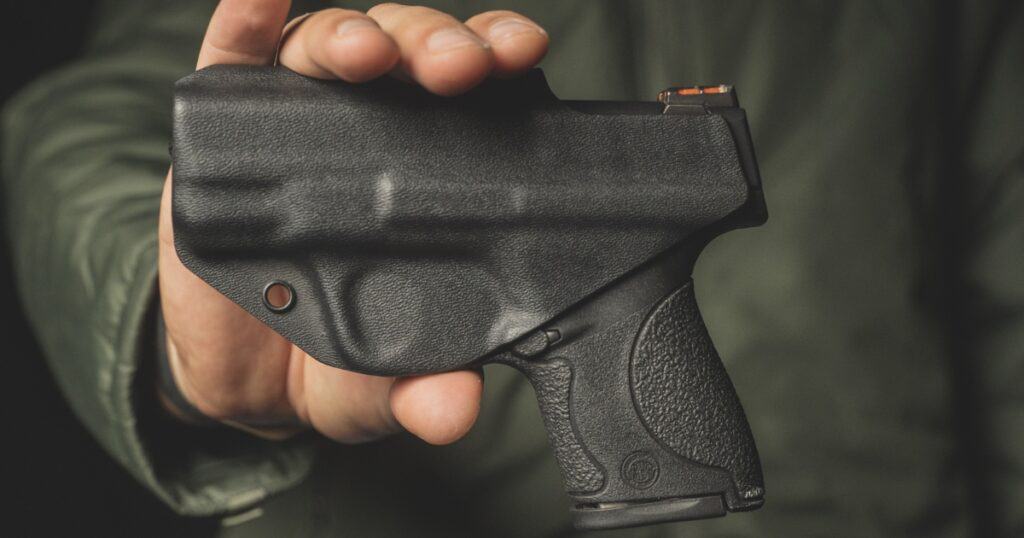
Gun safety training can help owners truly understand the potential danger that firearms can pose when improperly handled. This creates a healthy respect for the power of firearms and the damage they can cause, leading to more cautious and responsible handling.
By participating in gun safety training, individuals contribute to a broader culture of safety. This can have a ripple effect, influencing other gun owners to prioritize safety and potentially leading to widespread safer gun practices.
6. Addressing Specific Needs and Scenarios
Different types of firearms can have vastly different mechanisms and safety considerations. Training can help owners of specialized or unique firearms understand and navigate these specific needs.
Certain types of gun safety training provide scenario-based exercises, such as home invasion simulations. This type of training can help gun owners better understand how to respond safely and effectively in specific situations they may encounter.
7. Learning Proper Maintenance and Care
Regular maintenance ensures a firearm functions reliably when needed. Gun safety training teaches you how to maintain and care for your weapon correctly. Improper cleaning can lead to accidents, such as unintended discharge. Knowing how to safely clean your firearm can prevent these issues.
8. Understanding the Impact of Environmental Factors
Environmental factors, like rain, snow, or extreme heat, can affect a firearm’s operation. Training helps you understand these impacts and how to mitigate them. Different environments may require adjustments in your shooting technique. Safety training can help you understand and adapt to these changes.
9. Boosting Your Situational Awareness
Proper training can improve your ability to quickly identify potential threats in your environment. Beyond identifying threats, you’ll be more adept at noticing general safety hazards, such as an improperly stored firearm.
10. Understanding Safe Storage
For families, especially those with children, unsecured firearms can become fatal attractions due to youthful curiosity. Properly stored guns not only prevent these heartbreaking accidents but also deter thefts. A stolen firearm might find its way into illicit activities, escalating community safety concerns.
Additionally, correct storage ensures that the gun remains in prime condition, free from environmental wear and tear. It’s essential to strike a balance: a storage method that both secures the firearm from unauthorized users and permits swift access to the owner during emergencies.
11. Learn First Aid and Emergency Response
The moments immediately after an unintentional firearm discharge can be crucial. Having the skills to provide initial care not only empowers gun owners to respond efficiently in these rare but critical situations but also highlights the broader responsibility that comes with firearm ownership.
Whether it’s stemming blood flow, administering CPR, or simply knowing the correct emergency numbers to call, these skills can make the difference between life and death. Modern first aid courses often include modules on gunshot wound management, and it’s recommended that all gun owners consider such training an essential component of their safety toolkit.
The Importance of Continuous Learning
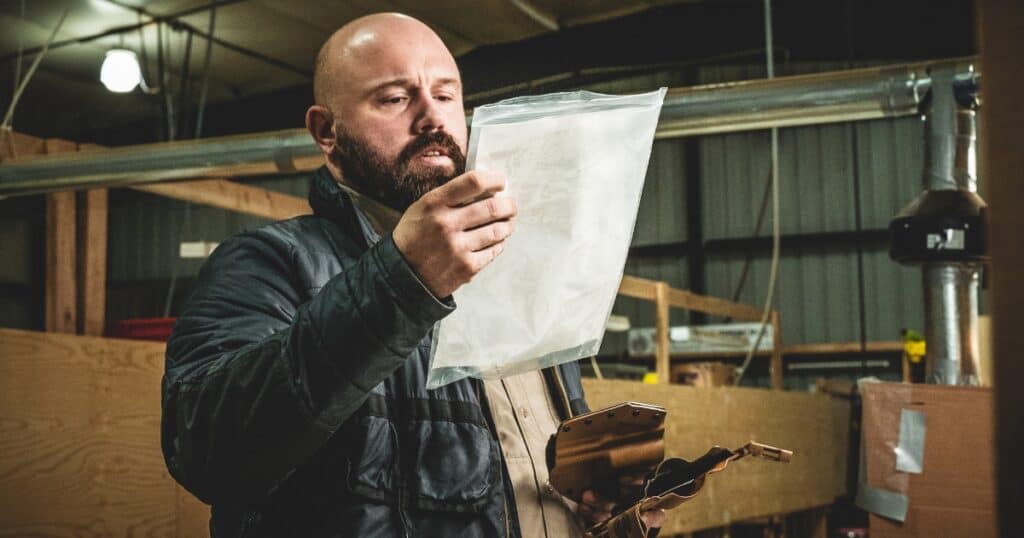
New models and types of firearms are constantly being developed, laws and regulations get updated, and best practices for handling and maintaining firearms get refined. Hence, firearm safety education is not a one-time event, but rather a lifelong commitment to learning and improvement.
Refresher courses in firearm safety are highly valuable for all gun owners, no matter how much prior experience they may have. These courses reinforce key safety principles and offer updated information on any changes in best practices, technology, or legislation. This ongoing education can help prevent complacency, a major contributor to firearm accidents, and ensure that knowledge and skills do not become outdated.
Benefits of Continuous Learning
Regular participation in firearm safety training offers several benefits:
- Staying Current: Gun safety training keeps participants up-to-date with the latest technologies, firearms, and safety measures, which can enhance their safety and effectiveness in using their weapons.
- Reinforcing Knowledge and Skills: Over time, without regular use or practice, knowledge and skills can fade. Continuous learning helps keep this vital information and these critical skills fresh and top-of-mind.
- Building Confidence: As gun owners continue to learn and hone their skills, they will naturally become more confident in their ability to use their firearms safely and correctly.
- Developing a Safety Mindset: Regular training cultivates a safety-first mindset, which is essential in all aspects of firearm ownership, from handling and cleaning to storage and usage.
How to Choose a Suitable Gun Safety Training Program
Given the importance of gun safety training, the next step is choosing the right program. Not all gun safety courses are created equal, and the quality of the instruction can significantly impact the skills and knowledge you gain. Here are some factors to consider when selecting a suitable gun safety training program:
Factors to Consider
- Accreditation: The course should be accredited by a recognized body, ensuring it meets certain standards of quality and comprehensiveness. In the U.S., for example, reputable accrediting bodies include the National Rifle Association (NRA) and state law enforcement agencies.
- Course Content: A good gun safety course should cover a range of topics, including basic firearm safety rules, gun handling, maintenance and cleaning, shooting skills, and legal aspects of gun ownership.
- Instructor Qualifications: Check the qualifications and experience of the instructors. They should not only be certified to teach firearm safety but should also have real-world experience in handling firearms.
- Class Size and Personal Attention: Smaller class sizes usually allow for more individual attention and personalized instruction, which can be beneficial for learning.
- Reviews and Recommendations: Look at reviews from previous participants or ask for recommendations from people you trust. This can give you a good idea of the quality of the training program.
A few recommended programs include the NRA’s training courses, which are widely recognized for their quality and comprehensiveness. Popular courses include:
- NRA Defensive Pistol Course
- NRA Basics of Pistol Shooting Course
- NRA Basic Personal Protection Course
You can also opt for courses offered by local law enforcement agencies, which often have a strong focus on the legal aspects of gun ownership. As an alternative to classroom instruction, it’s also worth considering an online home course, particularly if you have a busy schedule.
Safety as Second Nature
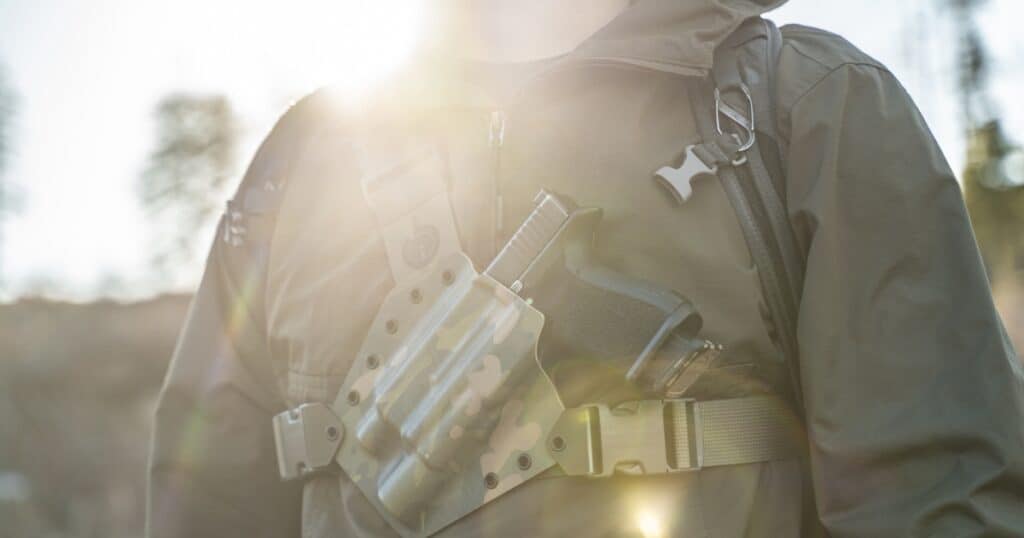
Owning a firearm is a significant responsibility. While guns can provide security, sport, and recreation, they also demand a thorough understanding of their power and potential risks. Every gun owner, whether new or experienced, stands to benefit immensely from gun safety training.
Gun safety training ensures not only personal safety but also the safety of those around them, ultimately contributing to a more responsible gun culture. With continuous learning and the right training program, gun owners can be more confident, responsible, and effective in their firearm usage, ensuring that safety always comes first.
August 15, 2023
